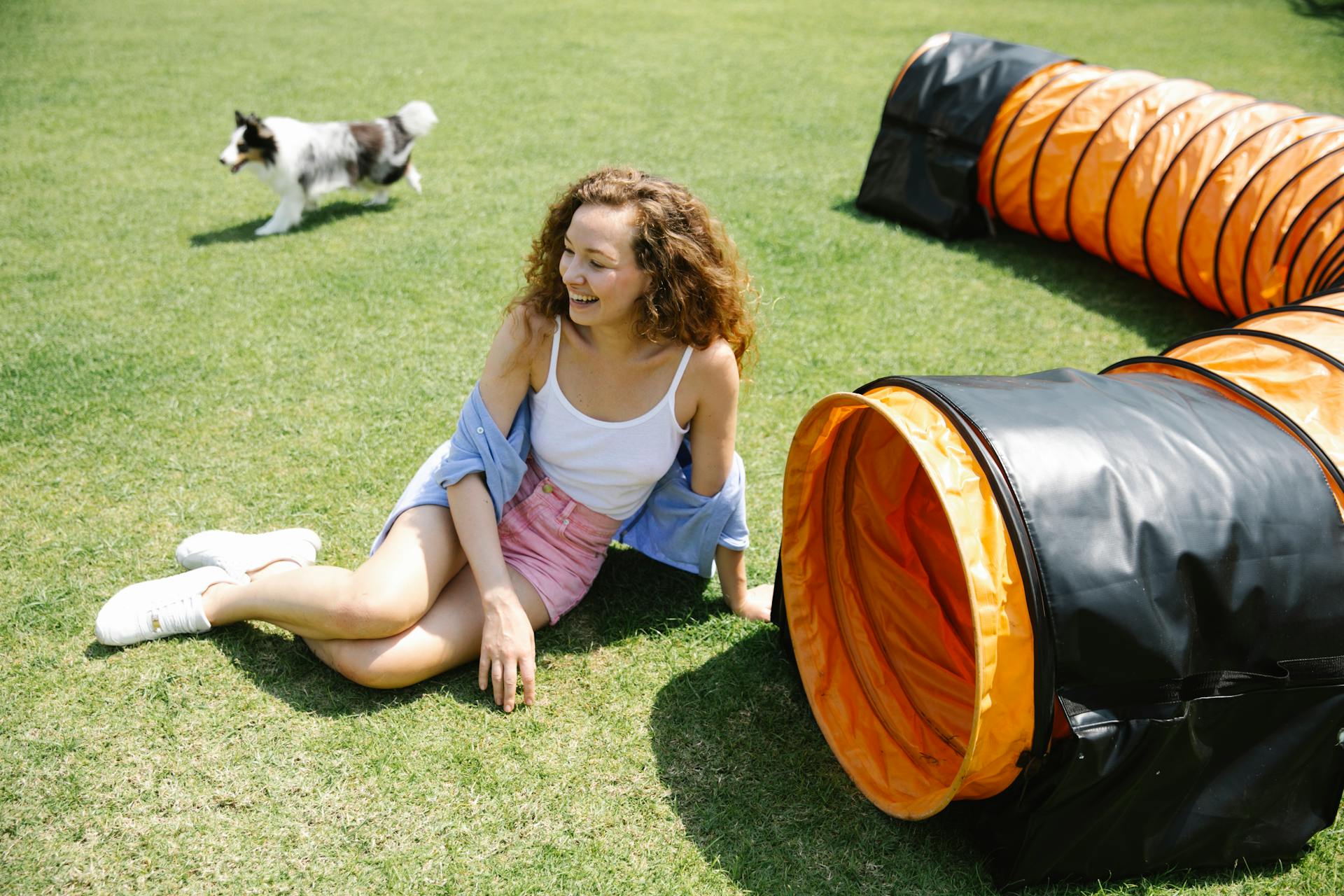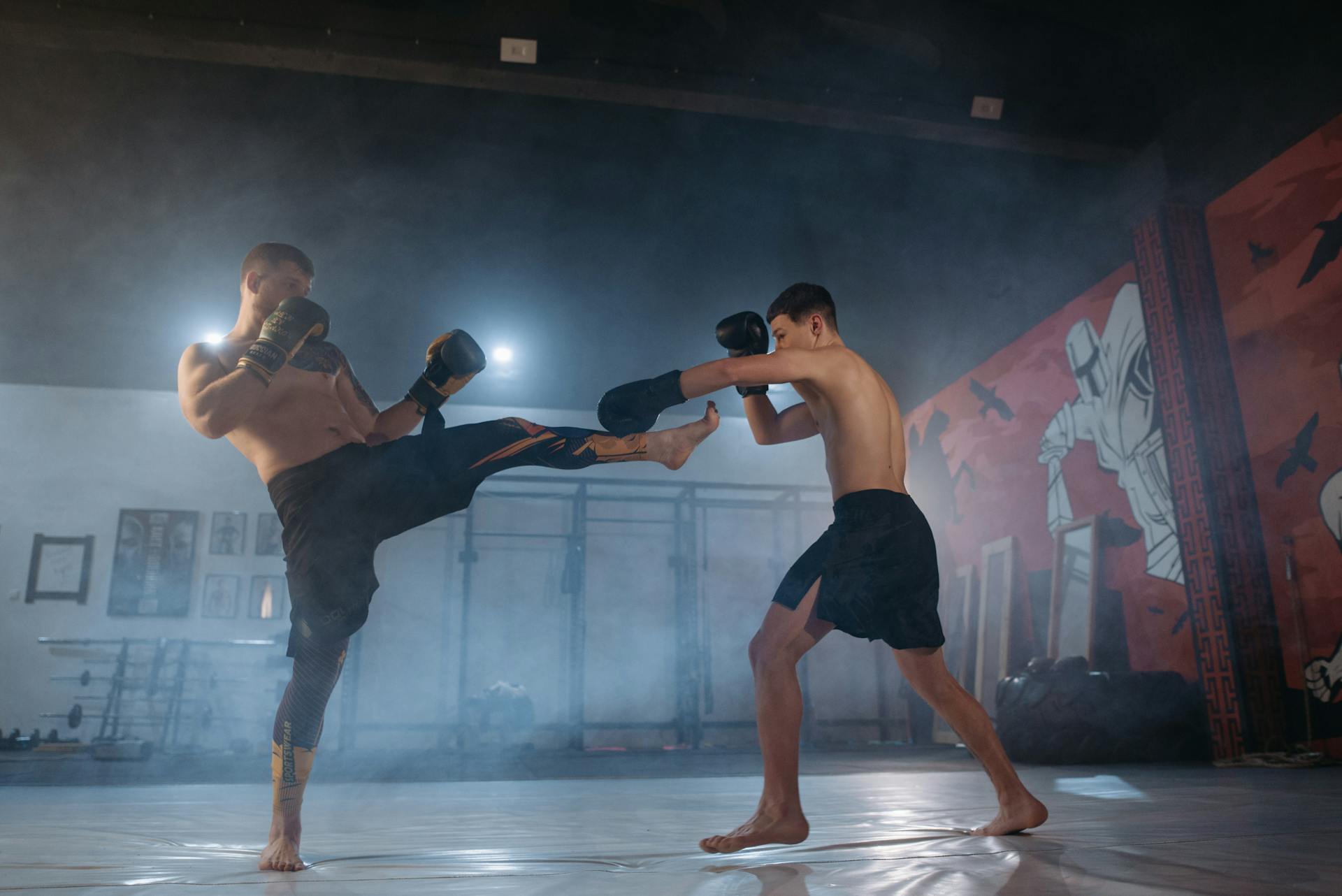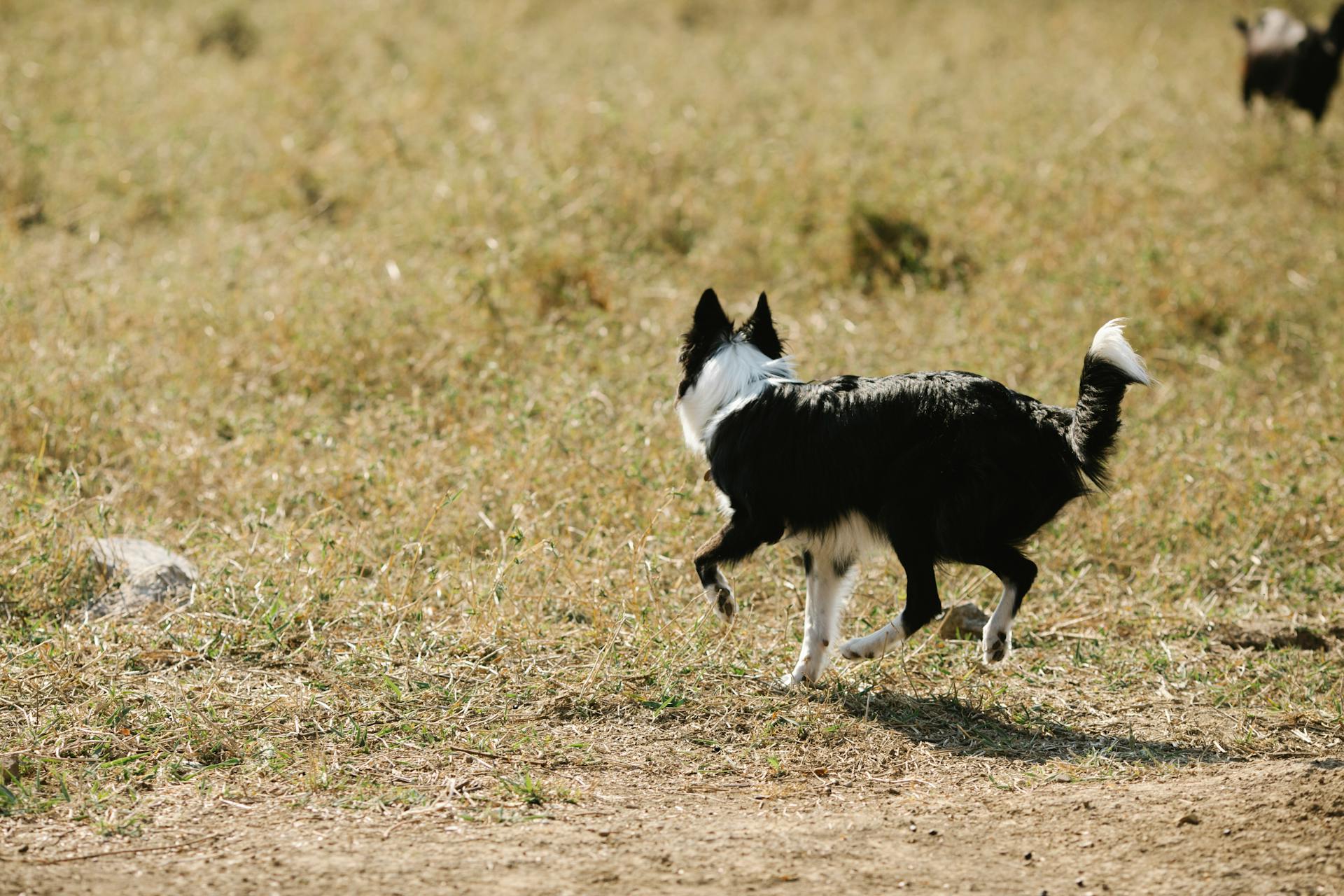
Indoor dog agility can be a fun and engaging way to keep your furry friend active and entertained, especially during harsh weather conditions or when outdoor activities aren't feasible.
You can start with simple obstacles like tunnels made from cardboard boxes or paper bags, which can be easily set up and rearranged to create a challenging course.
Incorporating household items like broom handles, chairs, and blankets can add variety to your indoor dog agility setup and provide your dog with a fun and mentally stimulating experience.
By using everyday objects, you can create a functional and engaging indoor dog agility course that suits your dog's age, size, and skill level.
A fresh viewpoint: Indoor Dog House Training
Setting Up an Indoor Agility Course
Setting up an indoor agility course can be a fun and creative process. You can start by clearing some space in your home to allow your dog to run and jump safely.
Begin by creating a basic course using everyday objects. Stacked blankets, towels, and pillows make great jumps, while a hula hoop is perfect for jumping through.
A large, open-ended box can be used as a crawl tunnel, and a basket with toys inside can be used as an obstacle to navigate. Don't forget to include a low ottoman or step stool for your dog to jump on.
Consider using a pole or broom placed across two boxes to create a fun leap-over obstacle. You can also add a ball or flying disc to catch at the end of the course for a fun challenge.
Here are some common items you can use to create an indoor obstacle course:
- Old couch cushions: These make great tunnels and landing pads.
- Cardboard boxes: The big ones are great for tunnels, and the small ones are perfect for dogs to jump over.
- Poofs: These small floor pillows can be used as a stool or landing pad.
Remember to start slowly and add obstacles one at a time to ensure your dog's safety. You can also mix up the path and add more hurdles to keep your dog engaged and challenged.
Obstacle Ideas
Building an indoor obstacle course for your dog is a great way to keep them active and engaged. You can start with simple items like old couch cushions, which can be used as tunnels and landing pads.
A set of 6 large couch cushions can be a great investment, as they can be used for a variety of obstacles. Cardboard boxes are also a great option, with big ones making great tunnels and small ones perfect for dogs to jump over.
Here are some specific obstacle ideas to get you started:
- Army crawl: Use a low table like a coffee table for your dog to crawl under.
- Zig zag: Set up a row of small obstacles like boxes, chairs, or shoes for your dog to zig zag through.
- Tunnel through a cardboard box or a set of couch cushions.
- Jump around pillows or over small obstacles like cardboard boxes.
- Jump through a hula hoop.
5 Obstacles for Dogs
Creating an indoor obstacle course for your dog can be a fun and easy way to keep them active. You can start by setting up a simple course with items you have at home, like old couch cushions, cardboard boxes, and pillows.
Using couch cushions is a great idea, as they can serve as tunnels and landing pads for your dog. You can also use cardboard boxes, which are perfect for tunnels and jumps.
One obstacle idea is to create a tunnel using two rows of chairs and a large blanket. This will give your dog a fun and challenging way to run through a dark tunnel.
Another great exercise is to teach your dog to crawl through an obstacle course. You can set up a low table, like a coffee table, and encourage your dog to crawl under it from one end to the other.
If you want to challenge your dog, you can set up a zig zag course using small obstacles on the ground, like boxes, chairs, or shoes. This is a great way to teach your dog to follow the leader and navigate through a challenging course.
Here are some specific items you can use to set up an obstacle course:
- Old couch cushions
- Cardboard boxes
- Poofs (small floor pillows)
- Dining chairs
- Low tables (like coffee tables)
- Small obstacles (like boxes, chairs, or shoes)
Safe Stair Sprints
Safe Stair Sprints are a fun way to get your dog's blood pumping and reinforce basic training skills. This exercise is best suited for adult dogs who already climb stairs easily, but be sure to avoid it if your dog has back problems.
Start at the bottom of the stairs and have your dog sit and stay. Then, throw a ball at the top of the stairs and wait a moment before saying "go." Let your dog dash up the stairs as fast as they can to retrieve the ball.
Carpeted stairs are ideal for Safe Stair Sprints because they provide traction and prevent slipping. Smooth materials can be slippery, so it's best to avoid them for this exercise.
Repeat the exercise as often as your dog has the energy, calling them back down the stairs each time.
If this caught your attention, see: Best Dog Food for Malnourished Dogs
Frequently Asked Questions
What age should a dog start agility?
Dogs typically start agility training between 12-18 months of age, but you can start teaching foundational skills earlier.
Does agility tire out a dog?
Yes, agility training is an effective way to physically and mentally tire out your dog. Regular agility sessions can provide a fun and engaging workout for your dog, improving their overall fitness and mental well-being.
How to make a dog agility course out of household items?
Create a dog agility course using household items by repurposing tall and stable objects, such as cardboard boxes or broom handles, to create weave poles and obstacles
Sources
- https://www.tcotc.com/agility-classes/
- https://www.dailypaws.com/dogs-puppies/dog-exercise-play/indoor-games-for-dogs
- https://animalwellnessmagazine.com/diy-indoor-dog-obstacle-course/
- https://houstondogmom.com/the-dog-gym-houston-indoor-dog-park-agility/
- https://www.kinship.com/dog-lifestyle/agility-training-exercises-your-dog-can-do-indoors
Featured Images: pexels.com


